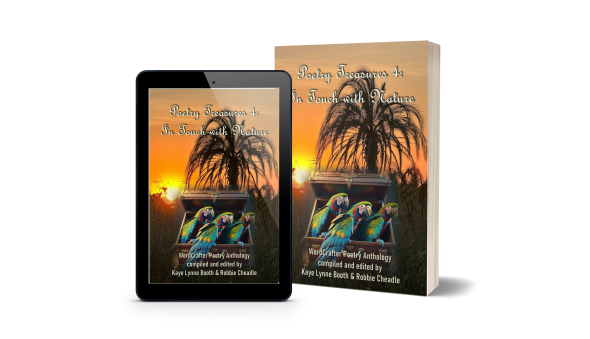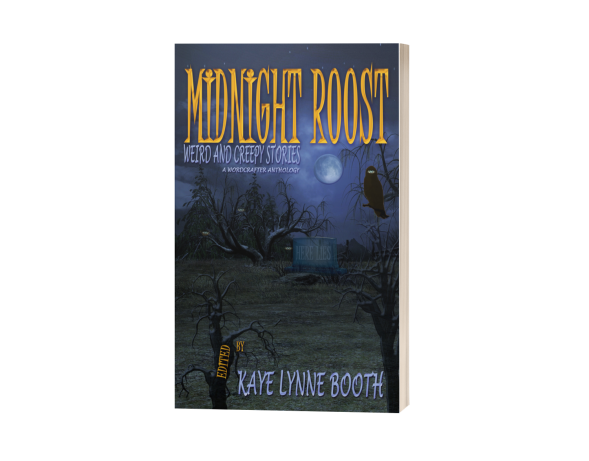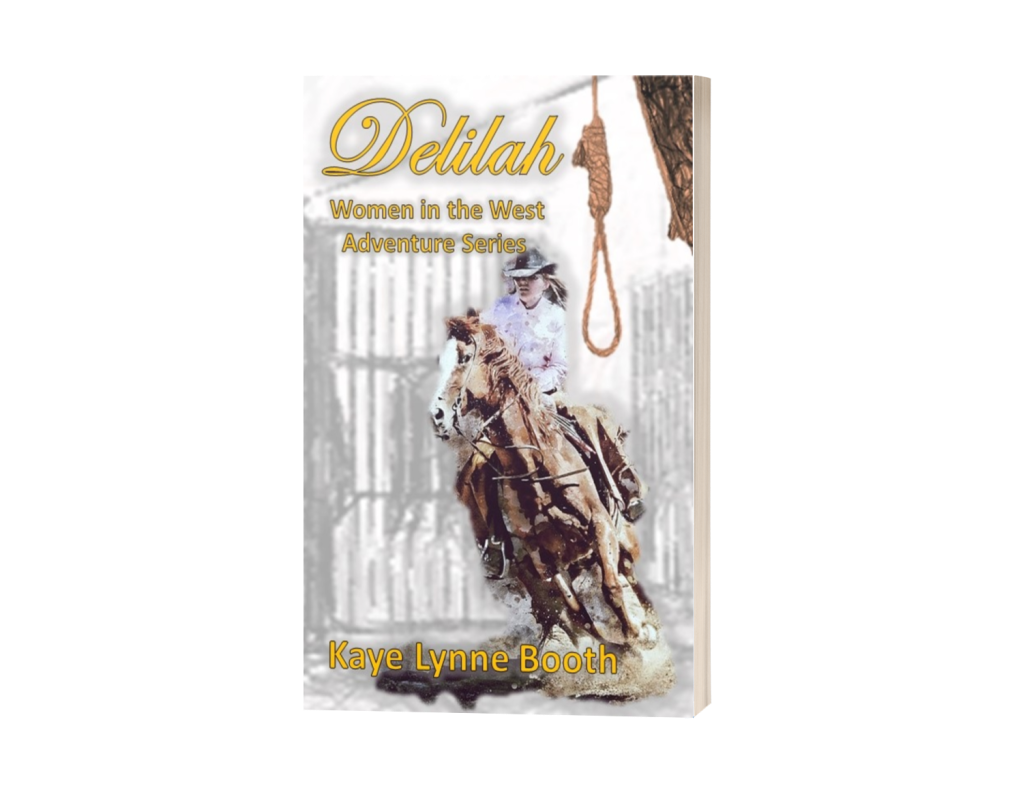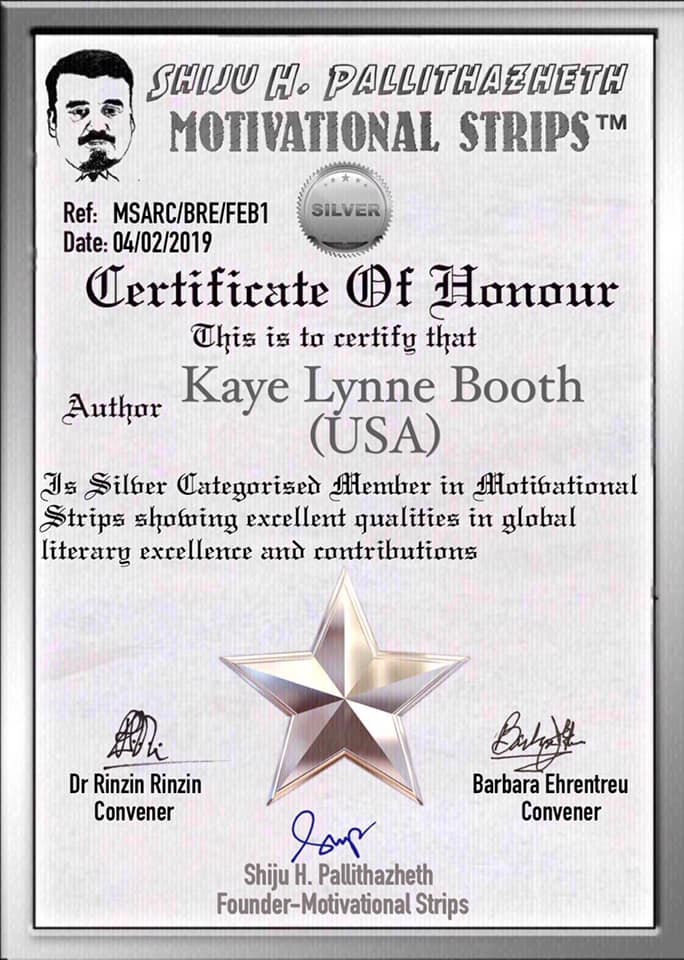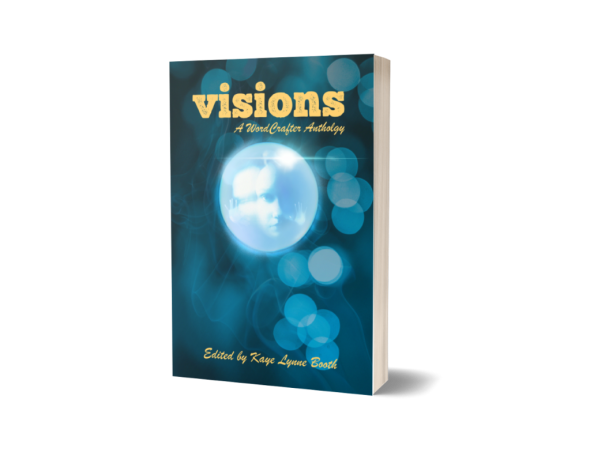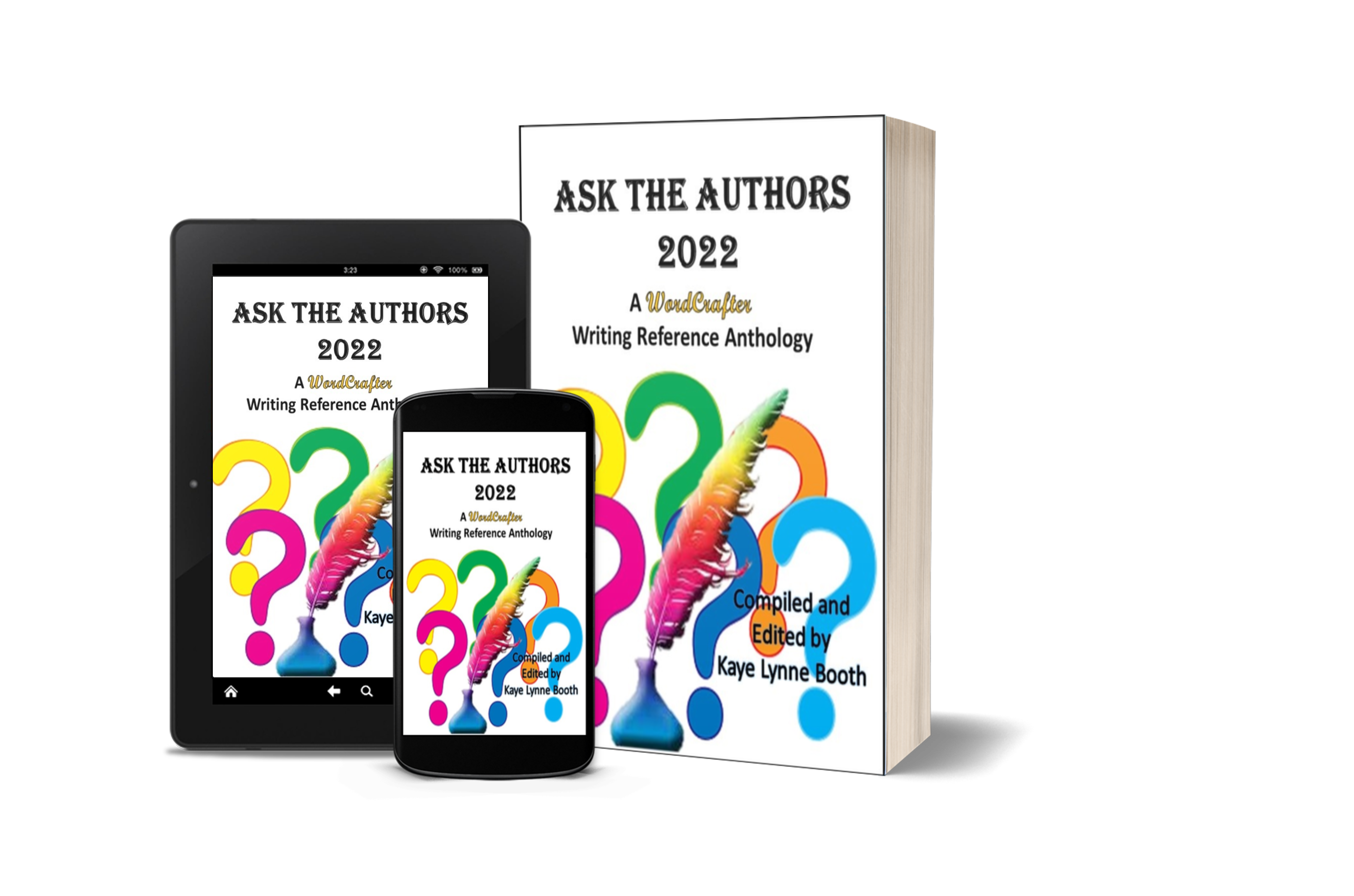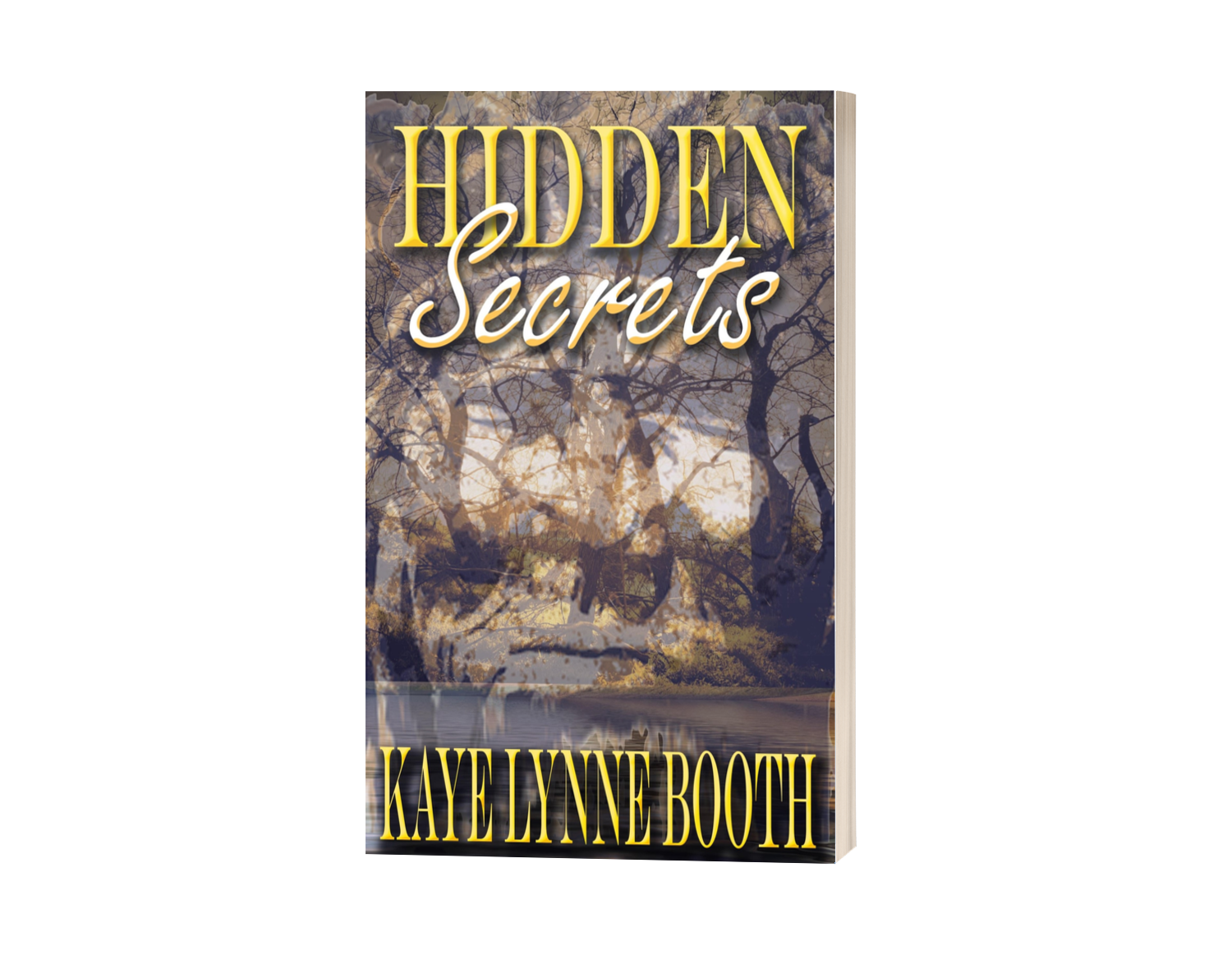In Touch with Nature – Highly endangered African painted wild dogs #Africanwildlife #Africanwilddogs
Posted: April 24, 2024 Filed under: Africa, Animals, In Touch With Nature, Nature, Wildlife | Tags: African Wild Dogs, In Touch With Nature, Nature, Robbie Cheadle, Wildlife, Writing to be Read 76 Comments
The African wild dog, also called the hunting dog or African painted dog, is currently listed as endangered on the IUCN Red List. According to the African Wildlife Foundation, only 6,600 African wild dogs remain in the wild across the entire African continent. The main reason for their endangerment is habitat fragmentation (the most common reason for wildlife endangerment) which causes conflict between these predators and humans. Throughout Africa, wild dogs have been shot and poisoned by farmers for loss of livestock, even though these losses are frequently due to other predators including hyenas and leopards. In addition, African wild dogs also suffer from endemic disease outbreaks.
African wild dogs have a mottled coat comprising of yellow, black and white patches. They have long legs with flat, broad heads, a short black muzzle, and large round ears.
Wild dogs have strong social bonds and live in packs of two to twenty-seven adults and yearling pups.
Wild dogs are excellent hunters. They hunt in packs of six to twenty individuals and catch their prey by chasing them to exhaustion. Wild dogs can run at speeds of up to 66 km/h (41 mph) for between 10 to 60 continuous minutes. They have an 80 percent kill success rate with is higher than bigger predators like lions and leopards.
Observers have noticed that prior to setting out to hunt, the wild dogs’ populations in the Okavango Delta of Botswana rally to determine whether they should depart. Departure is more likely when more individual dogs sneeze, a short sharp exhale through the nostrils. If a dominant dog initiates by sneezing, around three additional sneezes guarantee departure.
Sighting a pack of African wild dogs in the wild has been on my bucket list for a long time. I was lucky enough to see a pack of wild dogs at the Bthongo Rhino & Lion Nature Reserve but they live inside a relatively small enclosure and are fed.
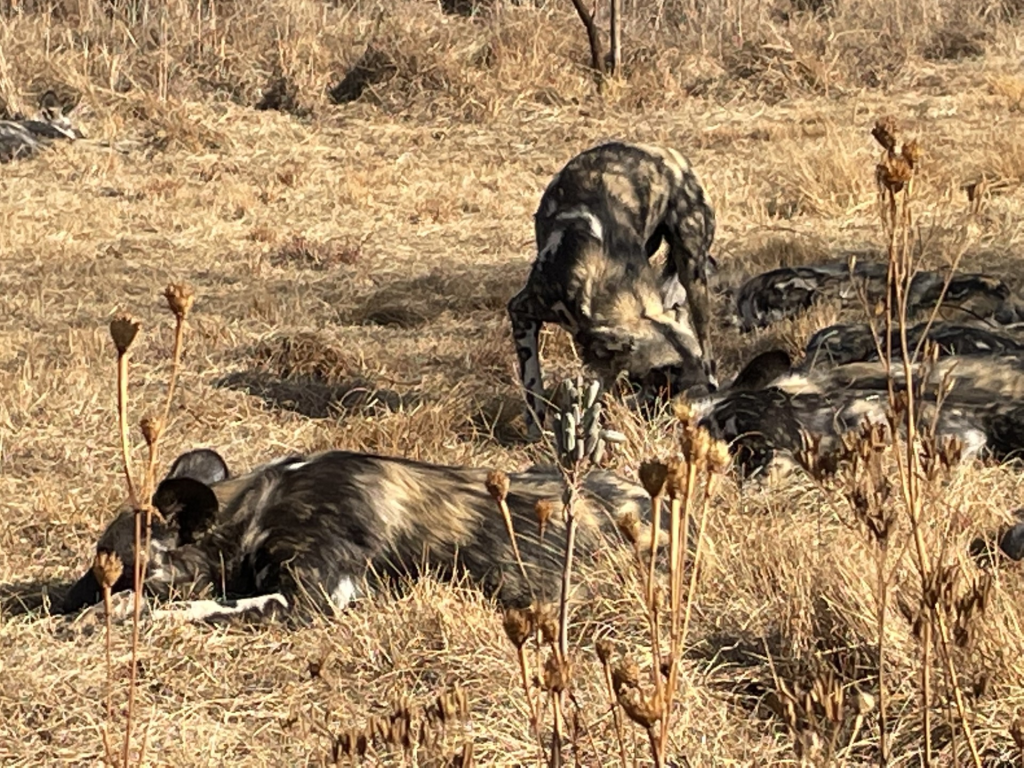
Obviously, seeing wild dogs in captivity is not quite the same as seeing them in a national park or game reserve. I was, therefore, delighted when we saw wild dogs at Madikwe Game Reserve not once, but two days in a row. We were fortunate enough to observe, the hunt (chase), devouring of a kill, and wild dogs relaxing and having fun.



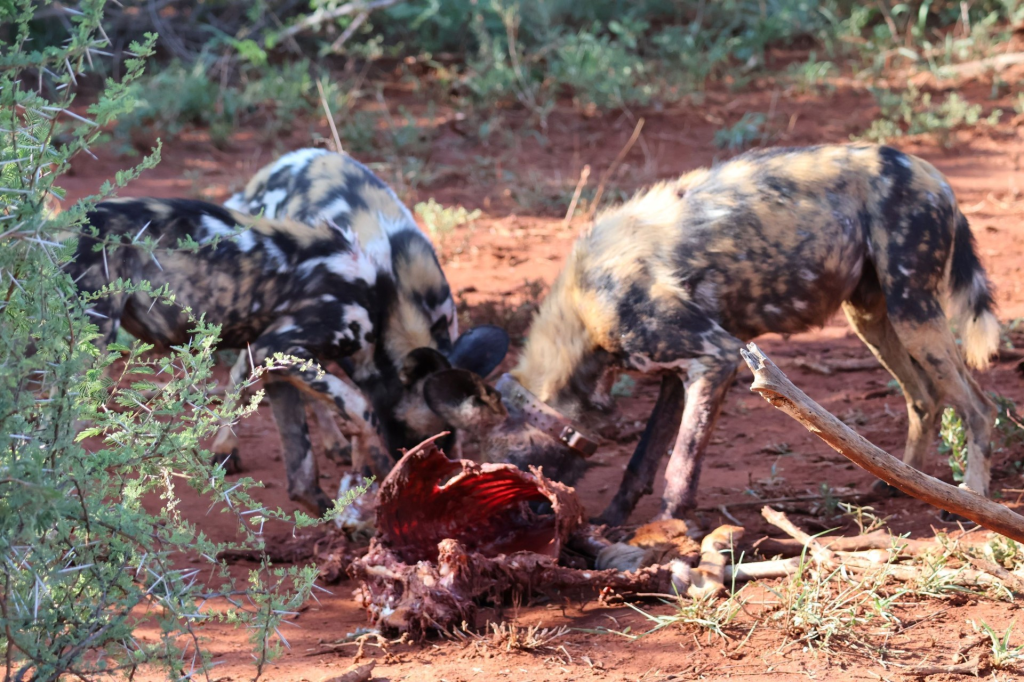
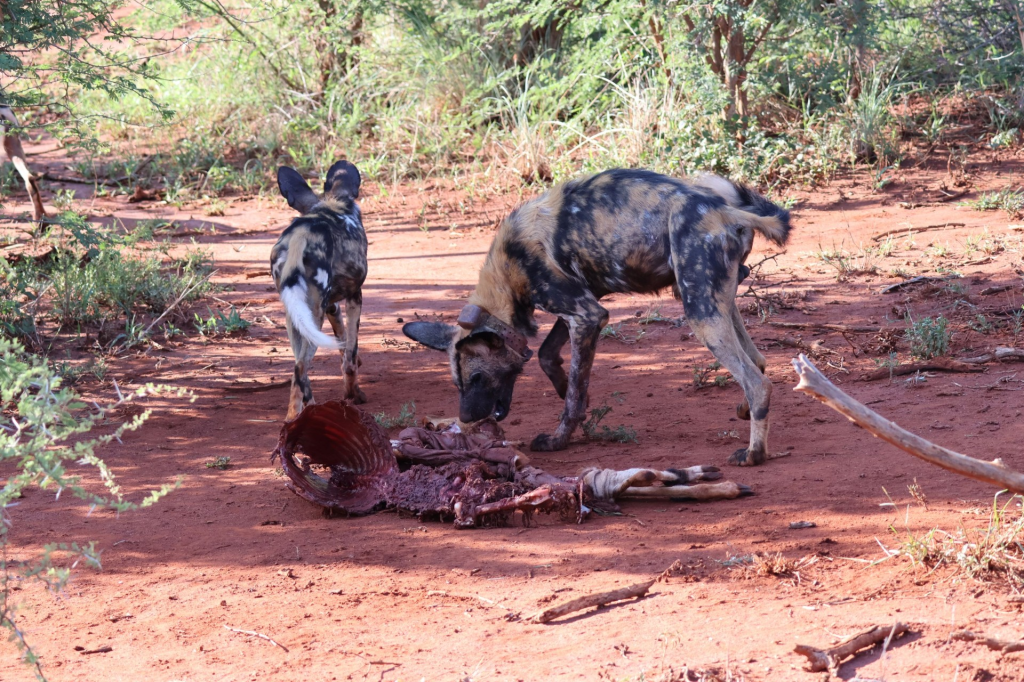
The poem below, Dog Vote, is extracted from my poetry book, Lion Scream.
Dog Vote
They yelp and growl at play
Then sleep in a mass
Of black fur, overlapped with yellow and white
They are invisible
Among the shadows
***
Having strong social bonds
Wild dogs live in packs
Dominated by a single breeding pair
But they all have a say
Conveyed as a vote
***
Before leaving to hunt
The adults rally
Sneezing to express a preference to hunt
The majority rules
All members comply
This is my YT video of African wild dogs playing:
African wild dogs in a gathering:
About Roberta Eaton Cheadle
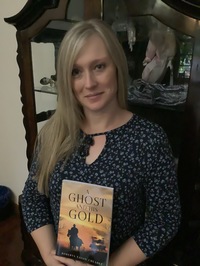
Award-winning, bestselling author, Roberta Eaton Cheadle, is a South African writer and poet specialising in historical, paranormal, and horror novels and short stories. She is an avid reader in these genres and her writing has been influenced by famous authors including Bram Stoker, Edgar Allan Poe, Amor Towles, Stephen Crane, Enrich Maria Remarque, George Orwell, Stephen King, and Colleen McCullough.
Roberta has two published novels and has horror, paranormal, and fantasy short stories included in several anthologies. She is also a contributor to the Ask the Authors 2022 (WordCrafter Writing Reference series).
Roberta also has thirteen children’s books and two poetry books published under the name of Robbie Cheadle, and has poems and short stories featured in several anthologies under this name.
Roberta’s blog features discussions about classic books, book reviews, poetry, and photography. https://roberta-writes.com/.
Find Roberta Eaton Cheadle
Blog: https://wordpress.com/view/robertawrites235681907.wordpress.com
Twitter: https://twitter.com/RobertaEaton17
Facebook: https://www.facebook.com/robertawrites
Amazon: https://www.amazon.com/Roberta-Eaton-Cheadle/e/B08RSNJQZ5
_____________________________________________________________________________________________
Want to be sure not to miss any of Robbie’s “In Touch With Nature” segments? Subscribe to Writing to be Read for e-mail notifications whenever new content is posted or follow WtbR on WordPress. If you found it interesting or entertaining, please share.
In Touch With Nature – Lionesses, the queens of the savannah #lionesses #wildlife
Posted: March 27, 2024 Filed under: Animals, In Touch With Nature, Nature, Writing to be Read | Tags: Animal Kindom, In Touch With Nature, Lions, Robbie Cheadle, Writing to be Read 58 Comments
Last month, I discussed the role of male lions in the pride. If you missed it, you can read it here: https://writingtoberead.com/2024/02/28/in-touch-with-nature-the-vulnerable-life-of-male-lions-wildlife-lions/. This month I’m talking about female lions.
Lionesses are the primary hunters within the pride. They hunt in groups of three to eight females, all of whom are usually related. Lionesses display exceptional teamwork during hunts, deploying strategic hunting techniques, such as coordinated flanking and ambushing, to outmaneuver their prey. Their synchronized approach increases the likelihood of a successful kill. Lionesses, working together, are able to take down a target twice their size. Lion prey includes zebra, wildebeests, buffalo, antelope and other grassland animals.

Lions will kill other predators including leopards, cheetahs, hyenas and African wild dogs. They do not eat them as the flesh of other predators is not nutritious. Lion predator kills are purely to remove competitors for food and territory, as well as threats to the lions young. In particular, lions actively kill leopards as leopards kill and eat their cubs.

This is my video of this lioness kill:
Lionesses are known to be excellent mothers and will go to great lengths to ensure the survival of their cubs. Lion mating is polygamous and takes place all year round. The dominant male will copulate with multiple females within his pride. Lionesses are receptive to mating for three or four days within their variable reproductive cycle and during this time they will mate frequently, up to fifty times per day. Female lions have the ultimate say in deciding which lion they will reproduce with. Lionesses observe the males carefully, accessing their physical condition, strength, and overall fitness, before committing to a partnership. Lionesses are also not monogamous and can mate with multiple lions during their estrous cycle, although it has been observed that approximately two-thirds of these mating events occur with the primary male, with the remaining third being distributed among multiple males from the peripheral coalitions of that primary male. This means that a single litter can have cubs from different fathers. Lionesses in the same pride often breed around the same time and the resultant cubs are raised together.
My video of lions mating:
Lionesses are pregnant for 105 to 112 days, during which time her belly will grow larger, and her nipples will enlarge and darken. Just before giving birth, the lioness will begin to look for a safe and secure place to give birth. Once she has found a suitable spot that is hidden from predators and close to water, she will start to build a den using grass and other materials. The actual birth is relatively quick, approximately 1 hour, and between two and four is the usual number for a litter.
The cubs are born blind and helpless and rely on their mothers to protect and care for them. During the first few weeks of their lives, the cubs feed on their mother’s milk and she only leaves them for short periods to hunt.
My video of lion clubs:
Last month I said that male lions commit infanticide and can kill the cubs of other males. Given that lionesses are fiercely protective of their cubs, why do they not defend their cubs from lions? The answer is simply that male lions are much bigger and more aggressive than lionesses. Challenging a male lion is risky for a lioness as it could lead to the serious injury or death of the lioness, as a result, in this situation the lioness will prioritise her own survival and the wellbeing of the rest of the pride over the survival of her cubs.
If you are interested in seeing more of my photographs, videos and artworks relating to Cats, please enjoy this stunning post created by the talented Resa McConaghy. Resa and I share a love for wildlife and a passion for conservation.
Lion Lust by Robbie Cheadle
Sidling up beside her
He strokes her shoulder
In a gesture of affection for his mate
He quickly mounts her
For the eighteenth time
***
She walks quickly away
He meekly follows
Lying down face-to-face in her chosen spot
A short period of rest
Before the next round
***
They will stay together
For twenty-four hours
Mating every twenty to thirty minutes
Despite his high demands
She lovingly purrs
This poem is from my book Lion Scream, Syllabic Poetry About Southern African Wildlife.

About Roberta Eaton Cheadle

Award-winning, bestselling author, Roberta Eaton Cheadle, is a South African writer and poet specialising in historical, paranormal, and horror novels and short stories. She is an avid reader in these genres and her writing has been influenced by famous authors including Bram Stoker, Edgar Allan Poe, Amor Towles, Stephen Crane, Enrich Maria Remarque, George Orwell, Stephen King, and Colleen McCullough.
Roberta has two published novels and has horror, paranormal, and fantasy short stories included in several anthologies. She is also a contributor to the Ask the Authors 2022 (WordCrafter Writing Reference series).
Roberta also has thirteen children’s books and two poetry books published under the name of Robbie Cheadle, and has poems and short stories featured in several anthologies under this name.
Roberta’s blog features discussions about classic books, book reviews, poetry, and photography. https://roberta-writes.com/.
Find Roberta Eaton Cheadle
Blog: https://wordpress.com/view/robertawrites235681907.wordpress.com
Twitter: https://twitter.com/RobertaEaton17
Facebook: https://www.facebook.com/robertawrites
Amazon: https://www.amazon.com/Roberta-Eaton-Cheadle/e/B08RSNJQZ5
_____________________________________________________________________________________________
Want to be sure not to miss any of Robbie’s “In Touch With Nature” segments? Subscribe to Writing to be Read for e-mail notifications whenever new content is posted or follow WtbR on WordPress. If you found it interesting or entertaining, please share.
In Touch With Nature – The vulnerable life of male lions #wildlife #lions
Posted: February 28, 2024 Filed under: Animals, In Touch With Nature, Poetry, Wildlife | Tags: Animals, In Touch With Nature, Lions, Robbie Cheadle, South Africa, Wildlife, Writing to be Read 74 Comments
Lions live in groups called prides. Each pride is comprised of related lionesses and one or more adult male lions will also be present with the dominant male being the pride leader. Female lionesses are loyal to their pride and not to their family members, and this often means that they don’t keep related males in their pride.
Male lion cubs are frequent victims of snake bits, hunting hyenas, and male lions that aren’t their father or uncle. One in two male lion cubs will die in their first year of life. The greatest single cause of male lion mortality in the first year of life is infanticide by unrelated male lions.

At approximately three years of age, male lions are pushed out of their pride by their fathers. Alternatively, they may be forced to leave the pride when a new coalition of male lions takes over the pride. For a period of two or three years after leaving their prides, young male lions wander on their own, trying to avoid confrontation with older, stronger male lions. Frequently, single males find other males of a similar age and join them to form a coalition. Coalitions typically comprise of two to four male lions and are often made up of brothers or cousins although some include unrelated males. The main purpose for male lions forming coalitions is to compete with other male lions for mates.
When the males in a coalition reach four to five years of age, they will challenge other male coalitions for access to a pride of lionesses. When a new coalition takes over a pride, the new males seek out and kill the cubs of other males or drive them away. The purpose of the killing of cubs is to accelerate the return of the lionesses to a reproductive state thereby allowing the new males to raise their own cubs. The dominant male or pride leader generally gets first mating rights but lionesses do mate with other pride males. The lesser males usually get their opportunity when several females are in heat at the same time and if the dominant male losses interest while the lionesses are still in heat.



The dominant male is usually the largest, strongest male lion. Dominant males usually only retain that position for a few years and then they are challenged by a younger male or an outside coalition. During their time as pride leader, the male is responsible for defending the females and their cubs from predators such as hyenas.
When a battle for leadership takes place within an existing pride, the battle is usually fierce but not deadly. If an outside coalition challenges the leader, the battle will be to the death.
Brothers, a 99-sylable Double Ennead poem by Robbie Cheadle

Dry, yellow grass stretches
To the horizon
Just there, under a scrub tree, lie two brothers
Within slumbers embrace
They soak up the sun
***
The colour of ripe wheat
They blend with the bush
Male lions resting peacefully
Enjoying blissful dreams
Concerning fat buck
***
One starts gently stirring
Rolls over and sighs
His underbelly unintimidating
But then he yawns widely
Showing great long teeth
This poem is included in Lion Scream, Syllabic Poetry About Southern African Wildlife

Lion brothers walking on the road:
About Roberta Eaton Cheadle

Award-winning, bestselling author, Roberta Eaton Cheadle, is a South African writer and poet specialising in historical, paranormal, and horror novels and short stories. She is an avid reader in these genres and her writing has been influenced by famous authors including Bram Stoker, Edgar Allan Poe, Amor Towles, Stephen Crane, Enrich Maria Remarque, George Orwell, Stephen King, and Colleen McCullough.
Roberta has two published novels and has horror, paranormal, and fantasy short stories included in several anthologies. She is also a contributor to the Ask the Authors 2022 (WordCrafter Writing Reference series).
Roberta also has thirteen children’s books and two poetry books published under the name of Robbie Cheadle, and has poems and short stories featured in several anthologies under this name.
Roberta’s blog features discussions about classic books, book reviews, poetry, and photography. https://roberta-writes.com/.
Find Roberta Eaton Cheadle
Blog: https://wordpress.com/view/robertawrites235681907.wordpress.com
Twitter: https://twitter.com/RobertaEaton17
Facebook: https://www.facebook.com/robertawrites
Amazon: https://www.amazon.com/Roberta-Eaton-Cheadle/e/B08RSNJQZ5
_____________________________________________________________________________________________
Want to be sure not to miss any of Robbie’s “In Touch With Nature” segments? Subscribe to Writing to be Read for e-mail notifications whenever new content is posted or follow WtbR on WordPress. If you found it interesting or entertaining, please share.
In Touch With Nature – Giraffes chew bones and lions eat grass #animalkingdom #natureconservation
Posted: January 24, 2024 Filed under: Animals, In Touch With Nature, Nature, Wildlife | Tags: In Touch With Nature, Predators and Prey, Robbie Cheadle, Wildlife, Writing to be Read 107 Comments
Kaye and I are starting a new series this year entitled “In Touch With Nature”. We will be sharing information about the natural environment, and I will include some of my nature videos, artworks, and photographs.
For any writers, poets and authors who have an interest in nature conservation and our natural environment, I have joined the Society of Environmental Authors and Journalists. You can find out more about it here: Society of Environmental Authors and Journalists – Robbie Cheadle
For this first post in this series, I am discussing the topic of herbivores and carnivores.
The Oxford dictionary defines a herbivore as an animal that feeds on plants.
National Geographic expands on this to say that a herbivore is an organism that mostly feeds on plants. Herbivores range in size from tiny insects such as aphids to large, lumbering elephants. You can read more on this topic here: Herbivore (nationalgeographic.org)
Conversely, Oxford defines a carnivore as an animal that feeds on other animals.
National Geographic says: “A carnivore is an organism that eats mostly meat, or the flesh of animals. Sometimes carnivores are called predators.” You can read more here: https://education.nationalgeographic.org/resource/carnivore/

With the above in mind, did you know that many herbivores chew on bones? It’s true. Giraffes, red deer, reindeer, camels, wildebeest, kudu, gemsbok, and sable antelopes, as well as domestic cows and sheep, are not the strict vegans we think they are. They have all been observed to consume bones in a practice called osteophagy.
These animals do not actually eat the bones or break them open to eat the marrow inside, they only chew on dry bones and only when they are mineral deprived. Chewing bones provides herbivores with essential nutrients, phosphorus, and a bit of sodium.
Phosphorus is an essential mineral for all animals. This mineral plays an important role in the formation of the skeletal system and is necessary for certain biological processes including energy metabolism, protein synthesis, cell signaling, and lactation. A lack of phosphorus results in delayed growth and failure to regenerate new bone as well as problems with the reproductive system.
Another way herbivores obtain essential minerals and other elements they need is natural licks, also called salt licks. These licks can be natural but many are artificial and created by humans for the animals. You will see deer, moose, elephants, hippos, rhinos, tapirs, woodchucks, fox squirrels, mountain goats, porcupines and frugivorous bats all making use of natural or artificial licks to obtain phosphorus and biometals (sodium, calcium, iron, zinc, and other trace elements).

A further surprise is that lions sometimes eat small amounts of grass to extract certain nutrients they need. As their digestive system is designed to digest meat, they cannot digest the grass fully and often vomit soon after eating it.
Some of the reasons a lion may eat grass are as follows:
- It helps provide them with a source of water;
- It helps maintain their body weight;
- It helps keep them cool in hot weather;
- It helps settle stomach aches; and
- Its an easy way for a lion to get nutrients.
Lions are versatile. This means that if they are hunting in dry regions like the Kalahari Desert, lions may eat plants and fruits as an alternate source of water. Lions don’t drink very much.


Domestic dogs and cats also sometimes eat grass for the same reasons as lions. Just like lions, they usually vomit after eating it.
Animals are adaptable and find ways to meet their dietary needs. There are few perfect examples of herbivores or carnivores in the wild.
Here are a few of my YouTube wildlife videos:
This black maned lion walked right past our vehicle:
About Roberta Eaton Cheadle

Award-winning, bestselling author, Roberta Eaton Cheadle, is a South African writer and poet specialising in historical, paranormal, and horror novels and short stories. She is an avid reader in these genres and her writing has been influenced by famous authors including Bram Stoker, Edgar Allan Poe, Amor Towles, Stephen Crane, Enrich Maria Remarque, George Orwell, Stephen King, and Colleen McCullough.
Roberta has two published novels and has horror, paranormal, and fantasy short stories included in several anthologies. She is also a contributor to the Ask the Authors 2022 (WordCrafter Writing Reference series).
Roberta also has thirteen children’s books and two poetry books published under the name of Robbie Cheadle, and has poems and short stories featured in several anthologies under this name.
Roberta’s blog features discussions about classic books, book reviews, poetry, and photography. https://roberta-writes.com/.
Find Roberta Eaton Cheadle
Blog: https://wordpress.com/view/robertawrites235681907.wordpress.com
Twitter: https://twitter.com/RobertaEaton17
Facebook: https://www.facebook.com/robertawrites
Amazon: https://www.amazon.com/Roberta-Eaton-Cheadle/e/B08RSNJQZ5
_____________________________________________________________________________________________
Want to be sure not to miss any of Robbie’s “In Touch With Nature” segments? Subscribe to Writing to be Read for e-mail notifications whenever new content is posted or follow WtbR on WordPress. If you found it interesting or entertaining, please share.
Dark Origins – Letters to Santa #DarkOrigins #Christmas
Posted: December 27, 2023 Filed under: Uncategorized 52 Comments
Thomas Nast, an illustrator and cartoonist for Harper’s Weekly between 1857 and 1887 can be credited with kickstarting the process of sending letters to Santa. Nast’s depictions of Santa Clause largely shaped the way we now view Santa Clause. Even Santa’s backstory of being from the North Pole was influenced by Nast, who used his Santa illustrations to spread cheer to both the young and the old.

Picture credit: https://recollections.biz/blog/thomas-nast-santa-claus/. The image shows Santa seated at his desk and going through his mail. He is sorting letters into stacks labeled “Letters from Naughty Children’s Parents” and “Letters from Good Children’s Parents”.
This is an extract from a work in progress of mine titled Silly Billy goes to England. It’s all about Christmas letters.
“I was worried. Willy and I had only just written our Christmas letters and it was noon on the 24th of December. What if Father Christmas didn’t get them? I was sure his elves were busy the day before Christmas. It was all Dad’s fault. He shouldn’t have cancelled the plane tickets he’d booked in France. We would have gotten back to England much quicker if he hadn’t relied on the free flights provided by Eurostar. Mind you, when the trains were cancelled due to the snow, I thought we’d be stuck in Euro Disney over Christmas. That would have been awful. I’d had enough of the crowds and dirty toilets in the park.
Mom helped us write our letters as soon as we woke up. I had a list of ten books that I wanted on mine and a Star Wars Lego playset. Mom was pleased when she heard my wish list and smiled at me.
Willy didn’t have any books on his list. Willy wanted a Star Wars light sabre, the knights costume he had seen in Euro Disney, a police lego set, a wooden sword and shield, a big tin of chocolates (all for him – no sharing) and ten knights and a dragon. Mom looked less pleased about Willy’s list. He had no books on it and Mom said he was being greedy. She wrote three books on Willy’s list and didn’t add the last three items on his list.
Mom decided that now was the time to teach us boys a life lesson about being greedy at Christmas. She opened her laptop computer and Googled “letters to Santa through the ages”. A list of letters written by children from long, long ago came up in response to her search. Mom read them to us.
The first letter was written by a boy who lived in a place called Sumter in South Carolina. Mom said that South Carolina is in America. I want to go to America. I want to visit the Disney Land in America.
This letter was written in December 1883. Mom read the following:
“Dear Old Santa Claus
I call you old, because Papa says, you are the same “Santa Claus” that lived when Grandpa was a little boy, and he is over 75 years old now. Papa says that you are either at the North Pole, or in Norway or Russia today, he don’t know exactly where, but if I write you through the Watchman and Southron you will be sure to get my letter, as it is a very popular paper and goes everywhere.
Dear Santa, please come and see us once more next Monday night. Papa says times are so hard and money so scarce, that he is afraid you won’t be able to come and make us have a “Merry and Happy Christmas.
You mustn’t buy and bring us expensive presents, but only some little trifle to make our hearts glad.”
This letter made me feel a bit sad when I thought about all the things I had put on my wish list. The next two letters were even worse, and I felt tears coming into my eyes when I thought about the children who wrote these letters so long ago.
“Dear Santa
I hope you will enjoy your Christmas, as I intend to enjoy mine. O, how glad I am that Christmas is so near and that the dear child Jesus was born so many years ago when laid in a manger. I hope we will enjoy our Christmas better than the last one, as our dear good father die the 14 of Dec. We have miss him very much and will miss forever. I hope I will see him once again not in this world; but in heaven. Teresa Riedmiller Mom said that this letter was published in a newspaper called The Chicago Tribune on 22 December 1895.
The next letter that Mom read was from a time she called “the Great Depression”. Mom said that this was a time when all the people in the world were very poor. There were no jobs and lots of families were homeless and hungry. Mom said that throughout the Great Depression, which lasted for more than ten years, children wrote to Father Christmas, who these children called Santa Claus. Many of the letters asked Santa Claus for jobs, money or schoolbooks instead of toys and games. Some of the
children posted their letters to the White House in Washington D.C. Mom said that this is where the America president lives. The children hoped that the American president at that time, President Roosevelt, who cared so much about the American people, could somehow get their Christmas wishes to Santa Claus. Mom read that one letter to Santa Claus during the Great Depression was address as follows: Santa Claus in the Happy Land where there is no depression. The letter said the following:
“Dear Santa Claus, State street: I am a little girl, 7 years old, and I’m afraid that you won’t call at our house, because we are so poor. Father has to work hard all day and mother is sick and says we needn’t expect anything. Please when you are on the west side if you will just call and leave a little book or something I will be much obliged. You can’t come down the chimney, because it is too small, but I will open the door if you knock.”
Willy did not appreciate the life lesson Mom was giving us. He started to wriggle and kick the back of the settee.
Mom ignored him and read us a story that she said was written by a man acting as Father Christmas when he visited a boy in a Children’s Hospital on Christmas Day in 1960. This is what she read:
In the hospital was a boy called Bobby. When I met him he had tubes running every which way and had been in the hospital most of his life. Bobby looked up at me and said “Santa, what do you do with pain?”
I replied: “Well, because of my crooked fingers, I can’t even point straight to the North Pole, so I have to take Advil. What do you do with pain?”
Bobby said “I take pain and put it in a box and wrap it with tissue paper and bright ribbon and throw it away.”
“Why” I asked.
“I can’t show pain” said Bobby.
“Why not?” I asked.
“It hurts my Mother’s heart,” he replied.
Mom stopped there thank goodness. I had tears streaming down my face and Willy was standing on the floor jumping up and down, wanting to get going.
We put our letters on the counter and got ready to go shopping. There was no food in the house as we had eaten everything before we left for France. It was still snowing outside, and it was very cold. Dad didn’t want to drive far in the bad weather, so he said we would shop at the nearby city of Canterbury.”

About Roberta Eaton Cheadle

Award-winning, bestselling author, Roberta Eaton Cheadle, is a South African writer and poet specialising in historical, paranormal, and horror novels and short stories. She is an avid reader in these genres and her writing has been influenced by famous authors including Bram Stoker, Edgar Allan Poe, Amor Towles, Stephen Crane, Enrich Maria Remarque, George Orwell, Stephen King, and Colleen McCullough.
Roberta has two published novels and has horror, paranormal, and fantasy short stories included in several anthologies. She is also a contributor to the Ask the Authors 2022 (WordCrafter Writing Reference series).
Roberta also has thirteen children’s books and two poetry books published under the name of Robbie Cheadle, and has poems and short stories featured in several anthologies under this name.
Roberta’s blog features discussions about classic books, book reviews, poetry, and photography. https://roberta-writes.com/.
Find Roberta Eaton Cheadle
Blog: https://wordpress.com/view/robertawrites235681907.wordpress.com
Twitter: https://twitter.com/RobertaEaton17
Facebook: https://www.facebook.com/robertawrites
Amazon: https://www.amazon.com/Roberta-Eaton-Cheadle/e/B08RSNJQZ5
_____________________________________________________________________________________________
Want to be sure not to miss any of Robbie’s “Dark Origins” segments? Subscribe to Writing to be Read for e-mail notifications whenever new content is posted or follow WtbR on WordPress. If you found it interesting or entertaining, please share.
Dark Origins – Remembrance Month edition: War book quote quiz #DarkOrigins #Warnovelsquiz
Posted: November 22, 2023 Filed under: Uncategorized 40 Comments
I am not going to discuss the dark origins of war today. We all have our own views on what those are and they are all correct.
Last year I did a few book quiz posts on my home blog, Roberta Writes. I shared quotes from a number of famous books and readers (without using google) guessed which books they were from. I thought for this November post of Dark Origins, I would share quotes from a number of well know books about war. I will give you a clue to help you with your guesses.
This book is set in Asia and was written by an Australian-born British writer, screenwriter, director and World War II veteran and prisoner of war.
Quote 1: “Leave the problems of God to God and karma to karma. Today you’re here and nothing you can do will change that. Today you’re alive and here and honored, and blessed with good fortune. Look at this sunset, it’s beautiful, neh? This sunset exists. Tomorrow does not exist. There is only now. Please look. It is so beautiful and it will never happen ever again, never, not this sunset, never in all infinity.
Lose yourself in it, make yourself one with nature and do not worry about karma, yours, mine, or that of the village.”
Quote 2: “Love is a Christian word, Anjin-san. Love is a Christian thought, a Christian ideal. We have no word for ‘love’ as I understand you to mean it. Duty, loyalty, honor, respect, desire, those words and thoughts are what we have, all that we need.”
Quote 3: “Patience means holding back your inclination to the seven emotions: hate, adoration, joy, anxiety, anger, grief, fear. If you don’t give way to the seven, you’re patient, then you’ll soon understand all manner of things and be in harmony with Eternity.’ ”
This author was an English writer and philologist. From 1925 to 1945 hew was the Rawlinson and Bosworth Professor of Anglo-Saxon and a Fellow of Pembroke College, both at the University of Oxford.
“A hunted man sometimes wearies of distrust and longs for friendship.”
“The way is shut.
Then they halted and looked at him and saw that he lived still; but he did not look at them. The way is shut, his voice said again. It was made by those who are Dead, and the Dead keep it, until the time comes. The way is shut.”
“It is not despair, for despair is only for those who see the end beyond all doubt. We do not. It is wisdom to recognize necessity, when all other courses have been weighed, though as folly it may appear to those who cling to false hope.”
The title of this book means it is an impossible situation because you cannot do one thing until you do another thing, but you cannot do the second thing until you do the first thing
“The enemy is anybody who’s going to get you killed, no matter which side he is on.”
“What is a country? A country is a piece of land surrounded on all sides by boundaries, usually unnatural. Englishmen are dying for England, Americans are dying for America, Germans are dying for Germany, Russians are dying for Russia. There are now fifty or sixty countries fighting in this war. Surely so many countries can’t all be worth dying for.”
“When I look up, I see people cashing in. I don’t see heaven or saints or angels. I see people cashing in on every decent impulse and every human tragedy.”
This American author’s legacy to literature is his style
“Dying was nothing and he had no picture of it nor fear of it in his mind. But living was a field of grain blowing in the wind on the side of a hill. Living was a hawk in the sky. Living was an earthen jar of water in the dust of the threshing with the grain flailed out and the chaff blowing. Living was a horse between your legs and a carbine under one leg and a hill and a valley and a stream with trees along it and the far side of the valley and the hills beyond.”
“This was the greatest gift that he had, the talent that fitted him for war; that ability not to ignore but to despise whatever bad ending there could be. This quality was destroyed by too much responsibility for others or the necessity of undertaking something ill planned or badly conceived. For in such things the bad ending, failure, could not be ignored. It was not simply a possibility of harm to one’s self, which could be ignored. He knew he himself was nothing, and he knew death was nothing. He knew that truly, as truly as he knew anything. In the last few days he had learned that he himself, with another person, could be everything. But inside himself he knew that this was the exception. That we have had, he thought. In that I have been most fortunate. That was given to me, perhaps, because I never asked for it. That cannot be taken away nor lost. But that is over and done with now on this morning and what there is to do now is our work.”
“He smelled the odor of the pine boughs under him, the piney smell of the crushed needles and the sharper odor of the resinous sap from the cut limbs. … This is the smell I love. This and fresh-cut clover, the crushed sage as you ride after cattle, wood-smoke and the burning leaves of autumn. That must be the odor of nostalgia, the smell of the smoke from the piles of raked leaves burning in the streets in the fall in Missoula. Which would you rather smell? Sweet grass the Indians used in their baskets? Smoked leather? The odor of the ground in the spring after rain? The smell of the sea as you walk through the gorse on a headland in Galicia? Or the wind from the land as you come in toward Cuba in the dark? That was the odor of cactus flowers, mimosa and the sea-grape shrubs. Or would you rather smell frying bacon in the morning when you are hungry? Or coffee in the morning? Or a Jonathan apple as you bit into it? Or a cider mill in the grinding, or bread fresh from the oven?”
This author was an English Voluntary Aid Detachment nurse, writer, feminist, socialist and pacifist
“How fortunate we were who still had hope I did not then realise; I could not know how soon the time would come when we should have no more hope, and yet be unable to die”
“When I was a girl . . . I imagined that life was individual, one’s own affair; that the events happening in the world outside were important enough in their own way, but were personally quite irrelevant. Now, like the rest of my generation, I have had to learn again and again the terrible truth . . . that no life is really private, or isolated, or self-sufficient. People’s lives were entirely their own, perhaps–and more justifiably–when the world seemed enormous, and all its comings and goings were slow and deliberate. But this is so no longer, and never will be again, since man’s inventions have eliminated so much of distance and time; for better, for worse, we are now each of us part of the surge and swell of great economic and political movements, and whatever we do, as individuals or as nations, deeply affects everyone else.”
“When the sound of victorious guns burst over London at 11 a.m. on November 11th, 1918, the men and women who looked incredulously into each other’s faces did not cry jubilantly: ” We’ve won the war! ” They only said: ” The War is over.”
Let me know your guesses in the comments. I will share the answers in the comments a few days after the post goes live.
About Roberta Eaton Cheadle

Award-winning, bestselling author, Roberta Eaton Cheadle, is a South African writer and poet specialising in historical, paranormal, and horror novels and short stories. She is an avid reader in these genres and her writing has been influenced by famous authors including Bram Stoker, Edgar Allan Poe, Amor Towles, Stephen Crane, Enrich Maria Remarque, George Orwell, Stephen King, and Colleen McCullough.
Roberta has two published novels and has horror, paranormal, and fantasy short stories included in several anthologies. She is also a contributor to the Ask the Authors 2022 (WordCrafter Writing Reference series).
Roberta also has thirteen children’s books and two poetry books published under the name of Robbie Cheadle, and has poems and short stories featured in several anthologies under this name.
Roberta’s blog features discussions about classic books, book reviews, poetry, and photography. https://roberta-writes.com/.
Find Roberta Eaton Cheadle
Blog: https://wordpress.com/view/robertawrites235681907.wordpress.com
Twitter: https://twitter.com/RobertaEaton17
Facebook: https://www.facebook.com/robertawrites
Amazon: https://www.amazon.com/Roberta-Eaton-Cheadle/e/B08RSNJQZ5
_____________________________________________________________________________________________
Want to be sure not to miss any of Robbie’s “Dark Origins” segments? Subscribe to Writing to be Read for e-mail notifications whenever new content is posted or follow WtbR on WordPress. If you found it interesting or entertaining, please share.
Dark Origins – A Journal of the Plague Year by Daniel Defoe based on the Great Plague of London, 1665 #DarkOrigins #readingcommunity #history
Posted: October 25, 2023 Filed under: Books, Dark Origins, Fiction, Historical Fiction | Tags: A Journal of the Plague Year, BookReview, Daniel Defoe, Dark Origins, Robbie Cheadle, Writing to be Read 27 Comments
Overview

A Journal of the Plague Year by Daniel Defoe is a most interesting book particularly in light of the recent Covid-19 pandemic that swept the world.
It is written in the first-person as a first hand account of the protagonist’s, identified as H.F. and described as an unmarried saddler, experiences during the great plague that afflicted London in 1665. The story is fiction but it contains detailed statistics of the death bills as the plague started to take hold and over the months of its duration, charts, data and extracts from government documents which make it read like the non-fictional personal diary of someone who was recording the facts and figures of the time.
When the plague first comes to the city, it is contained to certain parishes and is staved off by the colder winter weather, but when late spring and summer arrive, the numbers of the infected and the dead increase significantly. The protagonist is aware that the rich are leaving the city, but he is very religious and believes that God wants him to stay.
He describes how the poor are tricked into purchasing preventative medicines and charms by quack doctors, fortune tellers, and other tricksters. It is interesting that he picks this thread up again later in the book and states that all of these ‘pretenders’ succumb to the plague.
H.F. describes in detail the horror of the plague. How infected people go mad and run naked through the streets until they drop down dead. He describes how the authorities implement a system of the shutting up of houses in terms of which when any member of a household was identified as having being infected, the entire household were locked up in the house and a watchman placed outside the door so they could not escape. The protagonist is not in favour of this system as it results in all the inhabitants of the household becoming infected and dying of the plague. It also results in a lot of desperate bids to escape shut up houses that resulted in the plague spreading further. Interestingly enough, a similar attempt to keep people in their homes during the Covid-19 pandemic also didn’t achieve the expected success and resulted in a huge amount of resistance by people.
H.F. depicts a governing structure in the city that is sympathetic to the situation of the poor and ensures that people have access to bread at a reasonable price throughout the duration of the plague. He goes into a lot of detail about the price of bread versus the weight of the loaves before the plague. The city is kept free of bodies which are collected at night and taken to mass graves.
The protagonist also goes into a lot of detail about the effect of the plague on the people of the city. The grief experienced by survivors who have lost their entire families and who follow their dead loved ones and throw themselves into the mass graves and other ‘infected’ people who effectively kill themselves because of the pain the disease is inflicting on them.
The narrator tells a lengthily story about three brothers who leave the city to escape the plague and meet up with a small band of other people also leaving. The difficulties experienced by Londoners who left the city and attempted to live in the countryside while the plague raged are detailed. The suspicion and lack of welcome by the rural villages and town who do not wish to accept any Londoners into their areas for fear of their carrying the plague, and the lack of shelter, food, and other amenities. The three brothers and their band manage to make a success of it with some help from a local wealthy landowner. They actually outlive a lot of the villagers when the plague does spread out of London and into the surrounding countryside.
Reading this book after the Covid-19 pandemic was fascinating. The parallels between this event more than 350 years ago in London and the experiences and reactions of people during the time of the pandemic are have a dreadful similarity. People turn to religion and to quack remedies, people resist the attempts by authorities to contain the disease by findings ways to escape from their homes, people suffer depression and loss.
This book is certainly not for everyone as it is filled with facts and figures, but I found it very interesting and appreciated the historical information shared.
The Great Plague of 1665 – 1666

The plague that broke out in London in 1665 was the worst outbreak to effect England since the black death of 1348. It is believed at approximately 15% of the population of London died. The recorded deaths were 68,596 but it is believed at least 100,000 people died. The population of the city in 1665 was 460,000.
The plague was carried by fleas on rats and they were attracted to the poorer parts of the city where rubbish and waste filled the streets.
There were three types of plague:
- Bubonic plague that caused swellings (buboes) in the lymph nodes found in the armpits, groin and neck. These sufferers experienced headaches, vomiting and fever. Sufferers had a 30% chance of dying within two weeks.
- Pneumonic plague which attacked the lungs and spread to other people through coughing and sneezing; and
- Septicaemic plague which occurred when the bacteria entered the blood. The chances of survival of this type of plague were very slim.

The treatments and methods of prevention were privative. Patients were bled with leeches. The air was cleansed using smoke and heat as people thought bad air caused the distemper. Children were encouraged to smoke to ward off bad air. Some people sniffed a sponge soaked in vinegar.
When the winter arrived, the plague started to decrease. Scientists believe this was due to people developing a stronger immunity to the disease rather than the great fire of London on 2 September 1666, making any notable impact through the destruction of houses within the walls of the city and on the banks of the River Thames. Many of the plague deaths had occurred in the poorest parishes outside the city walls
On The Plague Year: London, 1665
By DM Lovic
In London Town, the children played, the kittens purred, the flowers bloomed,
The adults laughed, the horses neighed, for no one knew they all were doomed.
Yes, all within the world was right when Death sneaked into town that night.
Beneath a haunted summer moon, upon a flute that whistled flat,
He played a slow, hypnotic tune that summoned every flea and rat
Who came from cellar, slum and glade to march the Devil’s plague parade.
Searching streets from side to side, the weakest souls with sword he struck,
Then left a token on their hide to signify the loss of luck.
For no one touched would e’er be saved, ‘twas six mere hours from spot to grave.
The wealthy fled to distant hills, doors were bolted, shutters locked,
But none could stop the morbid chills when death stood on the stoop and knocked.
Inside, they wept and fought with fate but, patiently, he’d smile and wait.
Sickness turned into despair, howls of terror, dreadful shrieks,
They echoed through the London air for weeks and weeks and weeks.
But panicked cries and wailing tears were only music to his ears.
One ghastly year that madness reigned and when Death fin’ly had withdrawn,
The price was tallied and explained: one hundred thousand souls were gone.
And London Town, in stark reverse, returned to life without the curse.
On city streets, the children played, the kittens purred, the flowers bloomed,
The adults laughed, the horses neighed, for every soul knew he was doomed.
From: The Poetry Nook
About Roberta Eaton Cheadle

Award-winning, bestselling author, Roberta Eaton Cheadle, is a South African writer and poet specialising in historical, paranormal, and horror novels and short stories. She is an avid reader in these genres and her writing has been influenced by famous authors including Bram Stoker, Edgar Allan Poe, Amor Towles, Stephen Crane, Enrich Maria Remarque, George Orwell, Stephen King, and Colleen McCullough.
Roberta has two published novels and has horror, paranormal, and fantasy short stories included in several anthologies. She is also a contributor to the Ask the Authors 2022 (WordCrafter Writing Reference series).
Roberta also has thirteen children’s books and two poetry books published under the name of Robbie Cheadle, and has poems and short stories featured in several anthologies under this name.
Roberta’s blog features discussions about classic books, book reviews, poetry, and photography. https://roberta-writes.com/.
Find Roberta Eaton Cheadle
Blog: https://wordpress.com/view/robertawrites235681907.wordpress.com
Twitter: https://twitter.com/RobertaEaton17
Facebook: https://www.facebook.com/robertawrites
Amazon: https://www.amazon.com/Roberta-Eaton-Cheadle/e/B08RSNJQZ5
_____________________________________________________________________________________________
Want to be sure not to miss any of Robbie’s “Dark Origins” segments? Subscribe to Writing to be Read for e-mail notifications whenever new content is posted or follow WtbR on WordPress. If you found it interesting or entertaining, please share.
Dark Origins – The Road by Cormack McCarthy, a novel set in a post apocalyptic world with a drastically altered climate #darkorigins #TheRoad #readingcommunity
Posted: September 27, 2023 Filed under: Apocalyptic, Books, Dark Origins | Tags: Apocalyptic, Climate change, Cormack McCarthy, Dark Origins, Robbie Cheadle, The Road, Writing to be Read 48 Comments
Cormack McCarthy’s novel, The Road, is set in a world that has been devastated by a cataclysmic event resulting in a drastically altered climate. The story begins in the middle with a father and his son travelling along a seemingly endless road in bitterly cold conditions and pushing their limited food and other supplies in a shopping cart. The world around them is completely grey from the dull grey sky overhead to the grey, ash covered wasteland they are travelling through. All the trees, plants and crops have been burned or scorched and there are no living creatures anywhere. It gets progressively colder as the pair’s journey continues and they are always hungry. The only food available is tinned or canned food they can scavenge from the desolate and abandoned houses they pass. The repetition of the word grey in all descriptions of the environment symbolises the bareness of the landscape
The following quotes describe the landscape depicted in The Road:
““Nothing. Where all was burnt to ash before them no fires were to be had and the nights were long and dark and cold beyond anything they’d yet encountered. Cold to crack the stones. To take your life. He held the boy shivering against him and counted each frail breath in the blackness.”
“He walked out in the gray light and stood and he saw for a brief moment the absolute truth of the world. The cold relentless circling of the intestate earth. Darkness implacable. The blind dogs of the sun in their running. The crushing black vacuum of the universe. And somewhere two hunted animals trembling like ground-foxes in their cover. Borrowed time and borrowed world and borrowed eyes with which to sorrow it.”
“The soft black talc blew through the streets like squid ink uncoiling along a sea floor and the cold crept down and the dark came early and the scavengers passing down the steep canyons with their torches trod silky holes in the drifted ash that closed behind them silently as eyes.”
As the story progresses, the details of the night of the catastrophe that ended civilization, and the rapid descend of the survivors into savagery’s following the scorching of the entire planetary ecology, are shared through memories of the father. This aspect of the book is similar to the degeneration of the school boys in William Goldings book, Lord of the Flies. Survivors have gathered in groups many of which have resorted to cannibalisms to supplement limited food supplies. It quickly becomes apparent that aside from the threats presented by the cold and hunger, other people pose an even greater danger to the travelers. In addition to all these obstacles, the father is very sick. He is suffering from some sort of lung disease, possibly lung cancer or a form of tuberculosis, which may have been caused by the ash in the air. The pair wear masks to filter the air they breath.
The Road acts as a warning about the irreversible and drastic consequences of climate change. This message is continuously driven home by the them of the certainty of death in a dying world. Death lurks at the edges of the father’s and son’s lives continuously. It takes many potential forms: the terrible cold, the father’s sickness, starvation due to the lack of food, and the evil cannibals’ patrolling the countryside. All of these are inescapable dangers for the pair and they will continue for the rest of their lives. The Earth is dead and is no longer able to sustain life.
I have focused on the themes of climate change and the death of Earth for this discussion as my purpose was to examine it against the backdrop of the current extreme weather being experienced around the globe resulting in flooding, fires, droughts, earthquakes and similar catastrophes.
For completeness sake, I will also mention that although the main conflict of the book is the struggle to stay alive in the adverse circumstances, there are also themes of hope and love. The entire purpose of the journey is one of hope to survive in the expected better climate at the coast. The father also constantly expresses his belief that their are good guys like them somewhere in the world. The boy is also depicted as an extremely empathetic and kind person despite the formidable nature of his circumstances.
The book ends on a relatively uplifting note with the boy finding ‘the good guys’ his father spoke about.
There is a movie of The Road and this is the trailer:
About Roberta Eaton Cheadle

Award-winning, bestselling author, Roberta Eaton Cheadle, is a South African writer and poet specialising in historical, paranormal, and horror novels and short stories. She is an avid reader in these genres and her writing has been influenced by famous authors including Bram Stoker, Edgar Allan Poe, Amor Towles, Stephen Crane, Enrich Maria Remarque, George Orwell, Stephen King, and Colleen McCullough.
Roberta has two published novels and has horror, paranormal, and fantasy short stories included in several anthologies. She is also a contributor to the Ask the Authors 2022 (WordCrafter Writing Reference series).
Roberta also has thirteen children’s books and two poetry books published under the name of Robbie Cheadle, and has poems and short stories featured in several anthologies under this name.
Roberta’s blog features discussions about classic books, book reviews, poetry, and photography. https://roberta-writes.com/.
Find Roberta Eaton Cheadle
Blog: https://wordpress.com/view/robertawrites235681907.wordpress.com
Twitter: https://twitter.com/RobertaEaton17
Facebook: https://www.facebook.com/robertawrites
Amazon: https://www.amazon.com/Roberta-Eaton-Cheadle/e/B08RSNJQZ5
_____________________________________________________________________________________________
Want to be sure not to miss any of Robbie’s “Dark Origins” segments? Subscribe to Writing to be Read for e-mail notifications whenever new content is posted or follow WtbR on WordPress. If you found it interesting or entertaining, please share.
Dark Origins – “Who Killed Cock Robin” an English nursery rhyme #darkorigins #nurseryrhymes
Posted: August 23, 2023 Filed under: Uncategorized 34 Comments

“Who Killed Cock Robin” is an English nursery rhyme which is believed to be ancient although the earliest record of the rhyme is in Tommy Thumb’s Pretty Song Book published in 1744. This version only contained the first four verses. The longer version was first printed in approximately 1770.
You can listen to a lovely rendition of “Who Killed Cock Robin” here:
Alternatively, these are the lyrics:
Who killed Cock Robin?
I, said the Sparrow,
with my bow and arrow,
I killed Cock Robin.
Who saw him die?
I, said the Fly,
with my little teeny eye,
I saw him die
Who caught his blood?
I, said the Duck,
It was just my luck,
I caught his blood.
Who’ll make the shroud?
I, said the Beetle,
With my thread and needle,
I’ll make the shroud.
Who’ll dig his grave?
I, said the Owl,
With my pick and trowel,
I’ll dig his grave.
Who’ll be the parson?
I, said the Rook,
With my little book,
I’ll be the parson.
Who’ll be the clerk?
I, said the Lark,
if it’s not in the dark,
I’ll be the clerk.
Who’ll carry the link?
I, said the Linnet,
I’ll fetch it in a minute,
I’ll carry the link.
Who’ll be chief mourner?
I, said the Dove,
I mourn for my love,
I’ll be chief mourner.
Who’ll carry the coffin?
I, said the Kite,
If it’s not through the night,
I’ll carry the coffin.
Who’ll bear the pall?
I, said the Crow,
With the cock and the bow,
I’ll bear the pall.
Who’ll sing a psalm?
I, said the Thrush,
As she sat on a bush,
I’ll sing a psalm.
Who’ll toll the bell?
I, said the Bull,
Because I can pull,
I’ll toll the bell.
All the birds of the air
fell a-sighing and a-sobbing,
when they heard the bell toll
for poor Cock Robin.
There is an alternative ending in which the sparrow who killed Cock Robin is hanged for his crime.
Dark Origins
Despite the earliest known record of this nursery rhyme being in 1744, there is some evidence that it may be much older.
A 15th century stained glass window in Buckland Rectory, Gloucestershire depicts the death of a robin by an arrow.

There are similarities between this nursery rhyme and a poem, Phyllyp Sparowe, written by John Skelton in 1508 which is about the death of the narrator’s pet bird.
There are a number of different theories about the meaning of the nursery rhyme. Some believe it is a parody of the death of King William II who was killed by an arrow which hunting in the New Forest (Hampshire) in 1100. King William was known as William Rufus which means “red”.
Another possibility is that the rhyme relates to the fall of Robert Walpole’s government in 1742. Robin is a short form of Robert. Robert Walpole, 1st Earl of Orford and known as Sir Robert Walpole between 1725 and 1742, was a British statesman and Whig politician and is generally regarded as the first Prime Minister of Great Britain. You can read more about Robert Walpole here: https://en.wikipedia.org/wiki/Robert_Walpole
Another alternative is that the nursery rhyme was inspired by ancient myths and legends:
The rhyme could record a mythological event such as the death of the god, Balder, from Norse mythology or the ritual sacrifice of a king as proposed in “The Cutty Wren” theory of a ‘pagan survival’. “The Cutty Wren” is a traditional English folk song which is believed to represent the human sacrifice of the year king or the slaughter of a wren, king of the birds, at the end of the year as a symbolic subsitute.
According to Celtic traditions, Lugh, the sun god who dies as the nights get longer after the summer solstice is depicted with a bow-and-arrow shape. Lugh represented the red sun and was known in Welsh as “Coch Rhi Ben” or Cock Robin. The sparrow who kills him may represent Bran the Blessed, the god of winter in the form of a raven.
About Roberta Eaton Cheadle

Award-winning, bestselling author, Roberta Eaton Cheadle, is a South African writer and poet specialising in historical, paranormal, and horror novels and short stories. She is an avid reader in these genres and her writing has been influenced by famous authors including Bram Stoker, Edgar Allan Poe, Amor Towles, Stephen Crane, Enrich Maria Remarque, George Orwell, Stephen King, and Colleen McCullough.
Roberta has two published novels and has horror, paranormal, and fantasy short stories included in several anthologies. She is also a contributor to the Ask the Authors 2022 (WordCrafter Writing Reference series).
Roberta also has thirteen children’s books and two poetry books published under the name of Robbie Cheadle, and has poems and short stories featured in several anthologies under this name.
Roberta’s blog features discussions about classic books, book reviews, poetry, and photography. https://roberta-writes.com/.
Find Roberta Eaton Cheadle
Blog: https://wordpress.com/view/robertawrites235681907.wordpress.com
Twitter: https://twitter.com/RobertaEaton17
Facebook: https://www.facebook.com/robertawrites
Amazon: https://www.amazon.com/Roberta-Eaton-Cheadle/e/B08RSNJQZ5
_____________________________________________________________________________________________
Want to be sure not to miss any of Robbie’s “Dark Origins” segments? Subscribe to Writing to be Read for e-mail notifications whenever new content is posted or follow WtbR on WordPress. If you found it interesting or entertaining, please share.
Dark Origins – Hotel on the Corner of Bitter and Sweet by Jamie Ford and the forced interment of the Japanese Americans during WW2 #DarkOrigins #WW2 #civiliansduringwar
Posted: July 26, 2023 Filed under: Uncategorized 33 Comments

An overview of the book
Hotel on the Corner of Bitter and Sweet is a historical novel written by Jamie Ford. The plot makes use of a dual timeline: one featuring Henry as a 12-year-old Chinese boy growing up during World War II and the other depicting Henry 44 years later as a widow with an adult son.
The storyline revolves around the friendship between Henry, the only son of immigrant Chinese parents living in Seattle, Washington, and Keiko, the daughter of a second-generation Japanese family. Henry and Keiko become friends as the only two Asian children at their elementary school. They are both bullied by their white peers, and they are both expected/forced to work as free labour in the school cafeteria dishing up meals and cleaning up in terms of their scholarships.
When Japan bombs Pearl Harbour and the USA enters the war, the anti-Japanese sentiment in America increases. Henry’s father, who only speaks Cantonese and who despises the Japanese because of the Japanese invasion of the Chinese province of Manchuria in 1931 and the impact it had on Henry’s father’s life, is concerned about his son’s safety. He forces Henry to wear an “I am Chinese” badge so that he isn’t mistaken for Japanese. Henry’s father is ardently anti-Japanese and Henry hides his friendship with Keiko and her family from him.
As the war progresses, the anti-Japanese sentiment in America increases and all people of Japanese ancestry are viewed as potential spies and war criminals. This culminates in the US government ordering all the people in Japan Town where Kaiko lives (adjacent to China Town where Henry lives) to relocate to internment camps.
Keiko’s family is transferred temporarily to Camp Harmony, a temporary internment facility on the Western Washington Fairgrounds in Puyallup, Washington. Henry is able to visit her through a collaboration with the lady who runs the cafeteria at his elementary school. He assists her in serving meals to the internees on a Saturday.
Eventually, Keiko’s family is transferred to the Minidoka internment camp in Idaho. Henry visits her there once with an older musician friend and they become betrothed. They agree to wait for each other and to write to each other.
Sadly, due to Henry’s father’s fanatical anti-Japanese attitude, this never turns out as planned and Henry loses touch with Keiko.
The second timeline features Henry as an older man with a grown son, Marty, who is studying at the local college. Henry wife, Ethel, has passed away from cancer and he is living alone. One day, Henry learns that the possessions of several Japanese American families who were forced to leave Japan Town have been discovered in the basement of the Panama Hotel. Henry goes to the hotel to investigate as he believes that some of Keiko’s families stored possessions might still be there. Henry has never forgotten Keiko even as he cared for his critically ill wife, but he kept his thoughts to himself. He eventually finds the courage to confide in Marty and his fiance about Keiko.
In summary, this book is about how warfare effects the lives of everyday people and civilians living away from the front lines. Keiko and Henry’s lives are both turned upside down due to the culture of fear, anger, and animosity that dominates during times of war.
Although the temporary and permanent internment camps where Keiko and her family live are both featured in this book, the camps are not a main character as is the case in some books about similar topics.
Dark origins
Hotel on the Corner of Bitter and Sweet revolves around the forced internment of Japanese American citizens during WW2.
During WW2, the US government forcibly relocated and incarcerated approximately 125,000 people of Japanese descent in 75 different internment facilities. Of those interned, approximately 67% were American citizens. The internments were undertaken as a result of Executive Order 9066 signed into effect by President Franklin D. Roosevelt. This order allowed regional military commanders to designate ‘military areas’ from which ‘any or all persons may be excluded’. People of Japanese ancestry were forced to leave Alaska, California and parts of Oregon, Washington and Arizona on the strength of this order.
Japanese Americans were initially prevented from participating in the military, but in 1943 this was changed and 20,000 Japanese Americans fought in the war on behalf of America. According to Hotel on the Corner of Bitter and Sweet, the internees volunteered for military services to prove their loyalty to their new country.
I was interested to learn that by 1992, the US government disbursed $1.6 billion in reparations to 82,219 Japanese Americans who had been incarcerated.
These are a few pictures that correlate with the content of this book taken from https://www.history.com/topics/world-war-ii/japanese-american-relocation


Japanese Americans incarcerated in crowded conditions in Santa Anita. https://www.history.com/topics/world-war-ii/japanese-american-relocation
A few powerful quotes from Hotel on the Corner of Bitter and Sweet
“The hardest choices in life aren’t between what’s right and what’s wrong but between what’s right and what’s best.”
“Henry, this isn’t about us. I mean it is, but they don’t define you by the button you wear. They define you by what you do, by what your actions say about you. And coming here, despite your parents, says a lot to them- and me. And they’re Americans first. They don’t see you as the enemy. They see you as a person.”
“The more Henry though about the shabby old knickknacks, the forgotten treasures, the more he wondered if his own broken heart might be found in there, hidden among the unclaimed possessions of another time. Boarded up in the basement of a condemned hotel. Lost, but never forgotten.”
“Henry looked up and down the empty avenue—no cars or trucks anywhere. No bicycles. No paperboys. No fruit sellers or fish buyers. No flower carts or noodle stands. The streets were vacant, empty—the way he felt inside. There was no one left.”
About Roberta Eaton Cheadle

Award-winning, bestselling author, Roberta Eaton Cheadle, is a South African writer and poet specialising in historical, paranormal, and horror novels and short stories. She is an avid reader in these genres and her writing has been influenced by famous authors including Bram Stoker, Edgar Allan Poe, Amor Towles, Stephen Crane, Enrich Maria Remarque, George Orwell, Stephen King, and Colleen McCullough.
Roberta has two published novels and has horror, paranormal, and fantasy short stories included in several anthologies. She is also a contributor to the Ask the Authors 2022 (WordCrafter Writing Reference series).
Roberta also has thirteen children’s books and two poetry books published under the name of Robbie Cheadle, and has poems and short stories featured in several anthologies under this name.
Roberta’s blog features discussions about classic books, book reviews, poetry, and photography. https://roberta-writes.com/.
Find Roberta Eaton Cheadle
Blog: https://wordpress.com/view/robertawrites235681907.wordpress.com
Twitter: https://twitter.com/RobertaEaton17
Facebook: https://www.facebook.com/robertawrites
Amazon: https://www.amazon.com/Roberta-Eaton-Cheadle/e/B08RSNJQZ5
_____________________________________________________________________________________________
Want to be sure not to miss any of Robbie’s “Dark Origins” segments? Subscribe to Writing to be Read for e-mail notifications whenever new content is posted or follow WtbR on WordPress. If you found it interesting or entertaining, please share.


